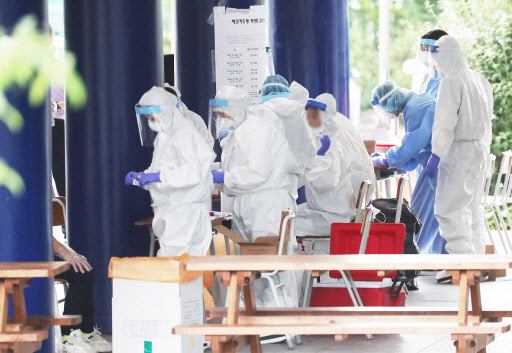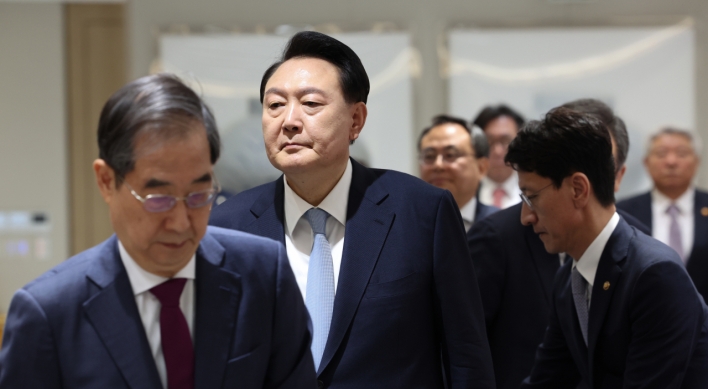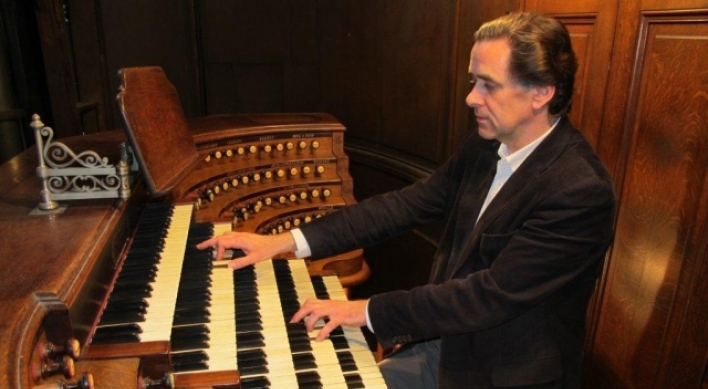Korea's COVID-19 situation more worrying than in May: KCDC
By Ock Hyun-juPublished : Aug. 13, 2020 - 16:19

South Korea faces a bigger crisis now than in early May due to the silent spread of the novel coronavirus leading to simultaneous COVID-19 outbreaks in the Seoul metropolitan area, health authorities said Thursday.
The country has seen a spike in locally transmitted COVID-19 cases linked to small gatherings at churches, schools and restaurants nationwide, with the transmission routes for 13.4 percent of all cases for the past two weeks remaining unknown.
In early May, the source of infection was clearly identified -- bars and clubs in Seoul’s Itaewon area -- and the virus spread from there to logistics centers and churches, which made it easier for the authorities to carry out contact tracing and identify transmission routes.
“But now, we see signs that cases without symptoms or with mild symptoms, undetected for some time, may have been silently spreading in the local community, leading to simultaneous outbreaks linked to churches, door-to-door sales, workplaces, markets and schools, especially in the Seoul metropolitan area,” Kwon Jun-wook, the Korea Centers for Disease Control and Prevention’s deputy director, said at a briefing Thursday.
“If the situation continues to get worse, it is inevitable to put in place restrictions on (people’s) normal daily lives or tighten social distancing rules,” he added.
Concerns are intensifying ahead of Liberation Day, which falls Saturday, as more people are expected to gather and move around to enjoy the three-day weekend. A large-scale rally is also scheduled in central Seoul.
Korea reported 56 new COVID-19 cases on Thursday, according to the KCDC. Of the new cases, 47 were locally transmitted -- including 25 in Seoul, 16 in the surrounding Gyeonggi Province and two in Busan -- and the remaining nine were imported. The total caseload rose to 14,770.
At least 11 employees working at eight Lotteria fast food chain restaurants were diagnosed with the virus as of Thursday, according to the KCDC. The health agency so far tested a total of 53 people -- including 19 Lotteria employees who had gathered for a meeting at a Lotteria near Gunja subway station in eastern Seoul on Aug. 6.
Churches and nursing homes remain major routes for the spread of the coronavirus.
Eight cases have been traced to a nursing home in southwestern Seoul since Aug. 7.
Nine more people were confirmed to be infected with the virus in connection with a church in Yongin, Gyeonggi Province, since the first patient tested positive Tuesday, raising the total of related cases to 12.
New cases were also reported at schools -- a total of eight cases linked to two high schools in Yongin, Gyeonggi Province, as well as three traced to a high school in Busan.
Of Thursday’s nine imported cases, three were detected during the quarantine screening process at the border, while the rest were identified while the individuals were under mandatory self-quarantine in Korea. Four of the newly diagnosed people were Korean nationals.
By country, six were from Asia -- two from the Philippines, two from Iraq, one from Vietnam and one from Kyrgyzstan. Two others were from the United States, and one was from Algeria.
So far, 13,817 people, or 93.55 percent, have been released from quarantine upon making full recoveries, up 31 from a day earlier. Some 648 people are receiving medical treatment under quarantine. Fifteen people remain in serious or critical condition.
The number of deaths stays unchanged at 305, with the overall fatality rate at 2.06 percent -- 2.4 percent for men and 1.78 percent for women -- as of Thursday. The fatality rate is 25.04 percent for those in their 80s or over and 9.32 percent for those in their 70s.
The country has carried out 1,654,898 tests since Jan. 3, with 17,798 people awaiting results as of Thursday.
By Ock Hyun-ju (laeticia.ock@heraldcorp.com)
-
Articles by Ock Hyun-ju








![[KH Explains] How should Korea adjust its trade defenses against Chinese EVs?](http://res.heraldm.com/phpwas/restmb_idxmake.php?idx=644&simg=/content/image/2024/04/15/20240415050562_0.jpg&u=20240415144419)










